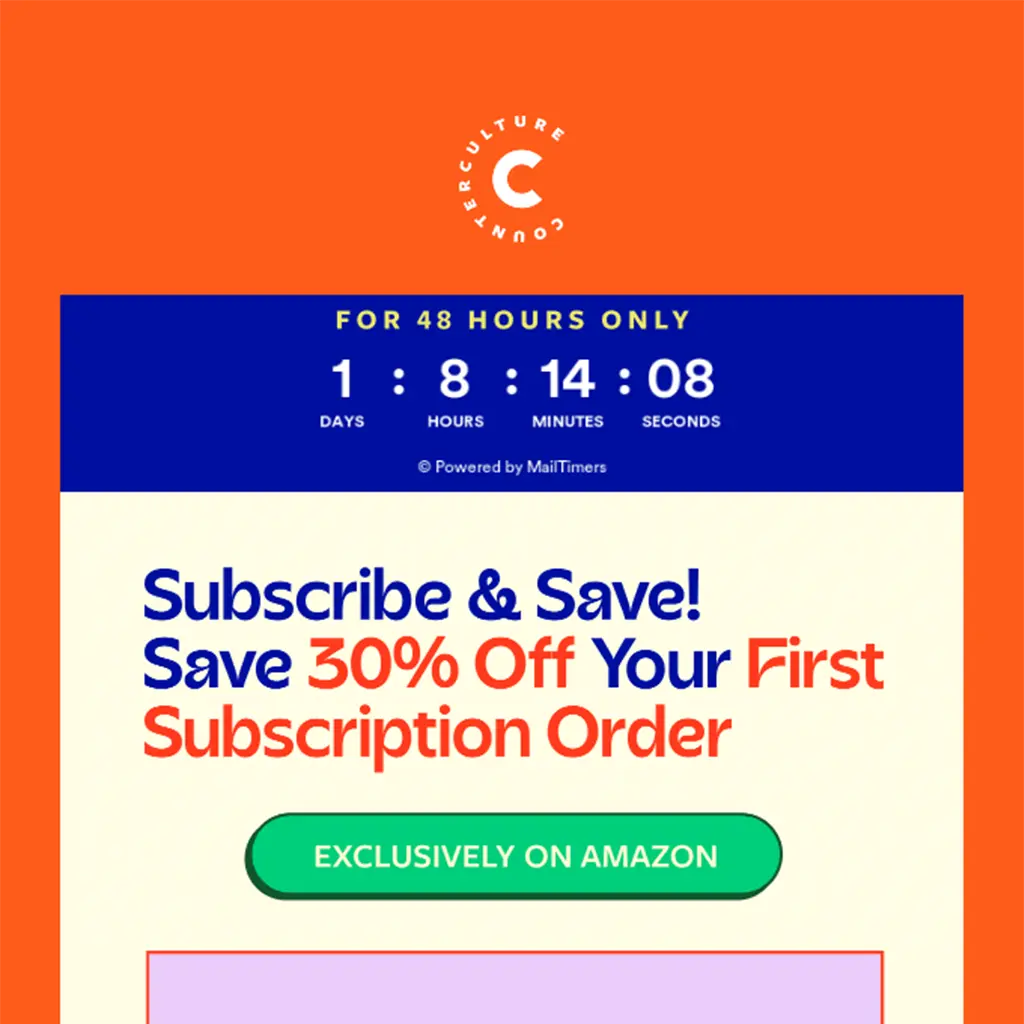Countdown Timer
In a time-bound campaign, a countdown timer embedded in your marketing email or checkout page tells visitors exactly how many hours, minutes, and seconds are left. It creates a sense of urgency, nudging people to click, decide, and buy before time runs out.

Behind the scenes, countdown timers are simple in concept but clever in execution. There are two main types: fixed and evergreen. A fixed countdown ticks down to a universal end date, such as “This sale ends on 31 March at 23:59.” Everyone sees the same clock. Evergreen timers are personalised. They track from the moment someone opens an email or lands on a page, such as “Your 24-hour offer starts now.” Every lead gets their countdown, tailored to their moment of entry.
This is where things get interesting for marketers using automation platforms or email service providers (ESPs). Evergreen timers rely on dynamic content and clever merge tags (personalisation tokens) to serve different timers to different users. On the other hand, fixed timers are easier to manage and useful for large-scale promotions with shared deadlines.
Countdown timers are common in e-commerce, SaaS campaigns, and event marketing. You’ll see them in abandoned cart flows (“Hurry, your basket expires in 10 minutes!”), product launch notifications, or early-bird pricing offers. They also appear in paid ads, pop-ups, email footers, and other media.
Why does a countdown timer work?
- It creates urgency and drives faster action, especially in competitive markets.
- It’s flexible across formats: email, landing pages, e-commerce checkouts.
- It supports personalisation via evergreen logic in automated journeys.
- It can boost conversion without changing your core offer by adding timing context.
Keep expanding your knowledge
Black Friday and Cyber Monday 2025 set new email sending records for Spotler customers
Black Friday & Cyber Monday 2025: Spotler breaks email sending records with 148 million emails.
Marketing, motherhood and the art of spinning multiple plates
Being a mum and working in marketing have a lot in common. You will need creativity, resilience, and the ability to juggle a dozen things at once.
More conversions with email
Not all emails are created equal! Make the most of your audience’s attention with these 21 techniques.
Why WhatsApp has become essential in modern ecommerce
Discover how WhatsApp strengthens your ecommerce strategy. Boost conversions, build trust and deliver fast, personal communications.
The A to Z of UTM
Everything you should know about UTMs and how to use them effectively, from character limits to the one place they can't help you.
Christmas Marketing Hub
The most joyful time of year is now. Time to set up your Christmas campaign. We got you covered with our Christmas toolkit. Everything you need for a beautiful campaign can be found in our hub.
Why do organisations choose Spotler? 7 convincing reasons
Discover 7 reasons why organisations choose Spotler: personal support, European reliability, AI innovation and high email deliverability.
Live Chat and WhatsApp: the keys to personal customer contact
Connect with customers via Live Chat and WhatsApp for better customer service. How do you approach this quickly and efficiently?
Should B2B brands bother with Christmas?
Explore whether B2B brands should embrace Christmas marketing, weigh the benefits, relevance and tactics for festive-season campaigning.
The marketing mix Christmas wishlist
Get the most out of the biggest shopping season of the year with these top 10 tips to improve your marketing mix this Christmas!


